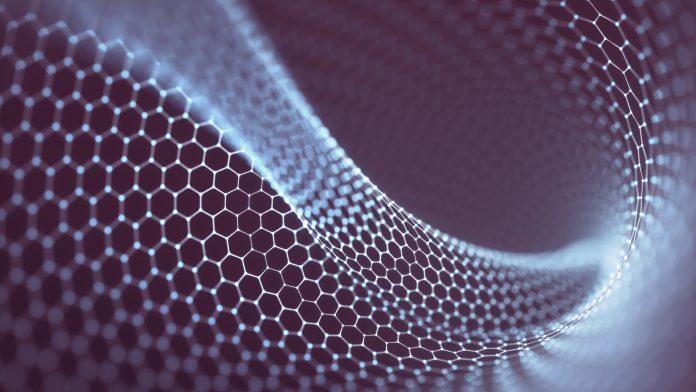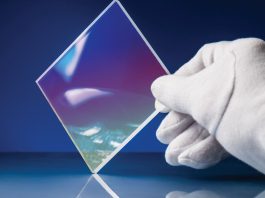An international team of researchers has synthesised graphene nanoribbons on a titanium dioxide surface to further innovation in quantum technologies.
Graphene is composed of single-atom-thick layers of carbon taking on ultralight, conductive, and extremely strong mechanical characteristics. When fashioned into graphene nanoribbons the material could be applied in nanoscale devices; however, the lack of atomic-scale precision in using current synthetic methods hinders the wider adoption of graphene.
Researchers at the Center for Nanophase Materials Sciences (CNMS), located at the Department of Energy’s Oak Ridge National Laboratory (ORNL), USA, have developed a ‘bottom-up’ approach – building the graphene nanoribbon directly at the atomic level in a way that it can be used in specific applications.
This precise method helped to retain the properties of graphene monolayers as the segments of graphene get smaller and smaller. Just one or two atoms difference in width can change the properties of the system dramatically, turning a semiconducting ribbon into a metallic ribbon. The team’s results were described in Science.
ORNL’s Marek Kolmer, a postdoctoral fellow and the lead author of the paper, said: “These microscopes allow you to directly image and manipulate matter at the atomic scale. The tip of the needle is so fine that it is essentially the size of a single atom. The microscope is moving line by line and constantly measuring the interaction between the needle and the surface and rendering anatomically precise maps of surface structure.”
To find a process that would work on a non-metallic substrate, Kolmer began experimenting with oxide surfaces, mimicking the strategies used on metal. Eventually, he then collaborated with a group of European chemists at CMRS on a design for a chemical precursor that would allow for synthesis directly on the surface of rutile titanium dioxide.
Li, a senior author of the paper who led the team at CNMS, said: “On-surface synthesis allows us to make materials with very high precision, and to achieve that, we started with molecular precursors. The reactions we needed to obtain certain properties are essentially programmed into the precursor. We know the temperature at which a reaction will occur and by tuning the temperatures we can control the sequence of reactions.”
Their approach created high-precision graphene nanoribbons, decoupled from the substrate, which is desirable for spintronic and quantum information science applications. The resulting system is ideally suited to be explored and built upon further as a nanoscale transistor.









